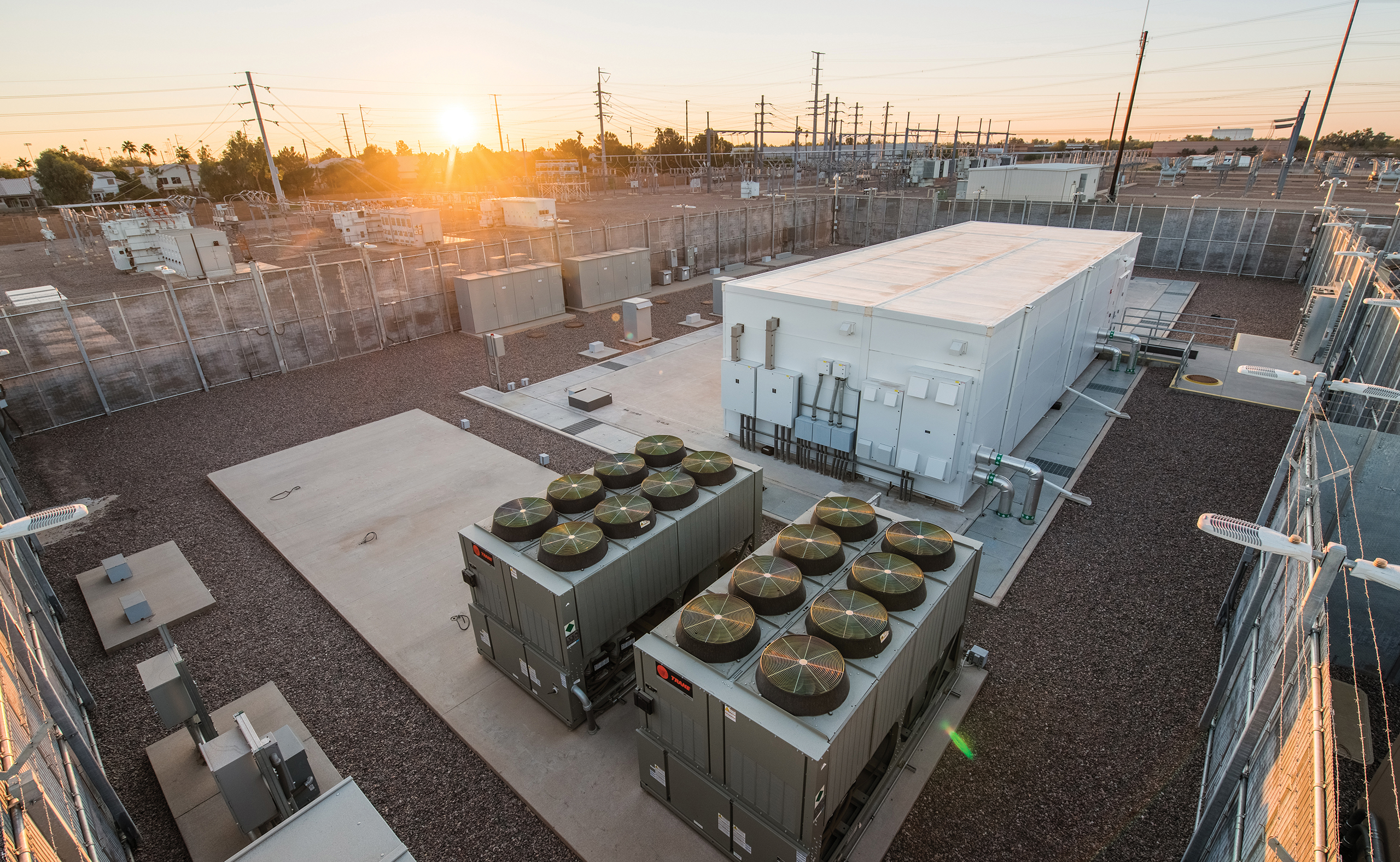
Vertical integration: The data and power intersection
Alumnus Clint Poole (MBA ’04, MSIM ’12) invented Salt River Project (SRP) DataStation, which is a scalable, quickly deployable modular data center that can connect directly to the grid near an SRP substation.
In a market of big data, big data centers, and big costs, alumnus Clint Poole’s (MBA ’04, MSIM ’12) idea may make a big impact on the industry.
The pace of technological innovation is driving rapid data center growth. Yet even with all the advancements driving said growth — mobile computing, the Internet of Things, and cloud computing — the underlying infrastructure has remained relatively the same. Data centers continue to be extremely expensive investments, and as they grow in size and importance, their failures grow in significance and visibility.
Why do we invest so much money in the data center to reduce risk associated with its most critical resource — power? Why not approach these issues from a different perspective and integrate the data center with its supply chain, the power grid, to increase performance and decrease costs? Poole’s questions planted the seeds for Salt River Project (SRP) DataStations™.
“I’ve worked in and around data centers for most of my career,” says Poole, who received his MBA in 2004 and his Master of Science in Information Management in 2012, both from W. P. Carey. “Coming to SRP, I was given an opportunity to see data center challenges from a new perspective, as a complete integrated system.”
Commercial Telecom Business Unit Manager at Salt River Project Clint Poole averts data center inefficiencies with his invention of SRP DataStations.
Data center balancing act
The challenge with data centers is to eliminate the risk associated with power-related failure while maintaining sufficient unit economic profitability, says Poole, who is responsible for SRP’s commercial fiber business. “As traditional data centers grow in size, they grow in complexity. The more complex the power infrastructure is within a data center, the more prone to failure it becomes,” he explains. Approximately 40 percent of the cost associated with constructing a data center goes to power reliability infrastructure, including generators, uninterruptible power supply, and switchgear. Statistics now show that most power-related failures within a data center have been associated with this infrastructure.
“These types of insights led me down a journey at SRP, with support from executive management, to figure out how we can better align my business unit — telecommunications — with our core business — power — and that’s where the SRP DataStation concept grew,” says Poole.
DataStation is a scalable, quickly deployable modular data center that can connect directly to the grid near an SRP substation. Its design addresses needs missing in the data center market: simple, reliable, and cost-effective power.
Power in 2030
Poole sees DataStation as the future of data centers. “Brick-and-mortar buildings with expensive and complex infrastructure are not sustainable, and they haven’t lived up to the industry’s performance expectations,” he says. Statistics show that data center power consumption could reach 20 percent of U.S. energy use by 2030. “At some point in the near future, the growth and economics of computing will be such that the sustainability of the traditional data center will be challenged.”
Poole’s team cut the ribbon on the first DataStation in 2015, and they have been rigorously testing DataStation ever since. In the summer of 2017, separate reliability studies were completed by the U.S. Department of Energy’s Oak Ridge National Laboratory and MTechnology, a firm that specializes in risk science for mission-critical facilities. Both studies resulted in higher reliability than the data center industry norm: annual availability of 99.998 percent and 99.997 percent, respectively.
“DataStation is the perfect example of collaboration across industries, and feedback from the data center industry has been remarkable,” says Poole. His team has had requests for tours from some of the largest data center operators in the world, including the major cloud providers and even the Pentagon.
When asked about potential interest in SRP DataStations, Lt. Gen. William J. Bender, chief of information dominance and chief information officer of the U.S. Air Force, provided the following statement:
“Given the Air Force’s focus on mission assurance, cybersecurity, lowering enterprise data center costs, and commitment to leveraging renewable energy sources like solar to the maximum extent possible, I visited the DataStation a few months ago. As we work hard to consolidate and optimize our data center infrastructure, the Air Force is evaluating whether DataStation is a viable approach within our enterprise portfolio. Without a doubt, I see this approach as an excellent example of the type of innovation the Air Force needs, as well as the kind of public/private partnership required to modernize and better secure the Department of Defense’s data center infrastructure.”
Read about more ways energy providers diversify how they do business. »
Latest news
- Pop culture is key to effective teaching
How a management and entrepreneurship professor uses Ted Lasso and other pop-culture touchstones…
- Artificial intelligence in business master's degree helps Nathan Merriman combine business strategy with technology
Nathan Merriman (MS-AIB '25) had been working in business for a few years when he learned about…
- How the Executive MBA empowered Scott Gates to be a mission-driven leader
Scott Gates (BS Marketing '04, Executive MBA '15) had a very positive experience during his…